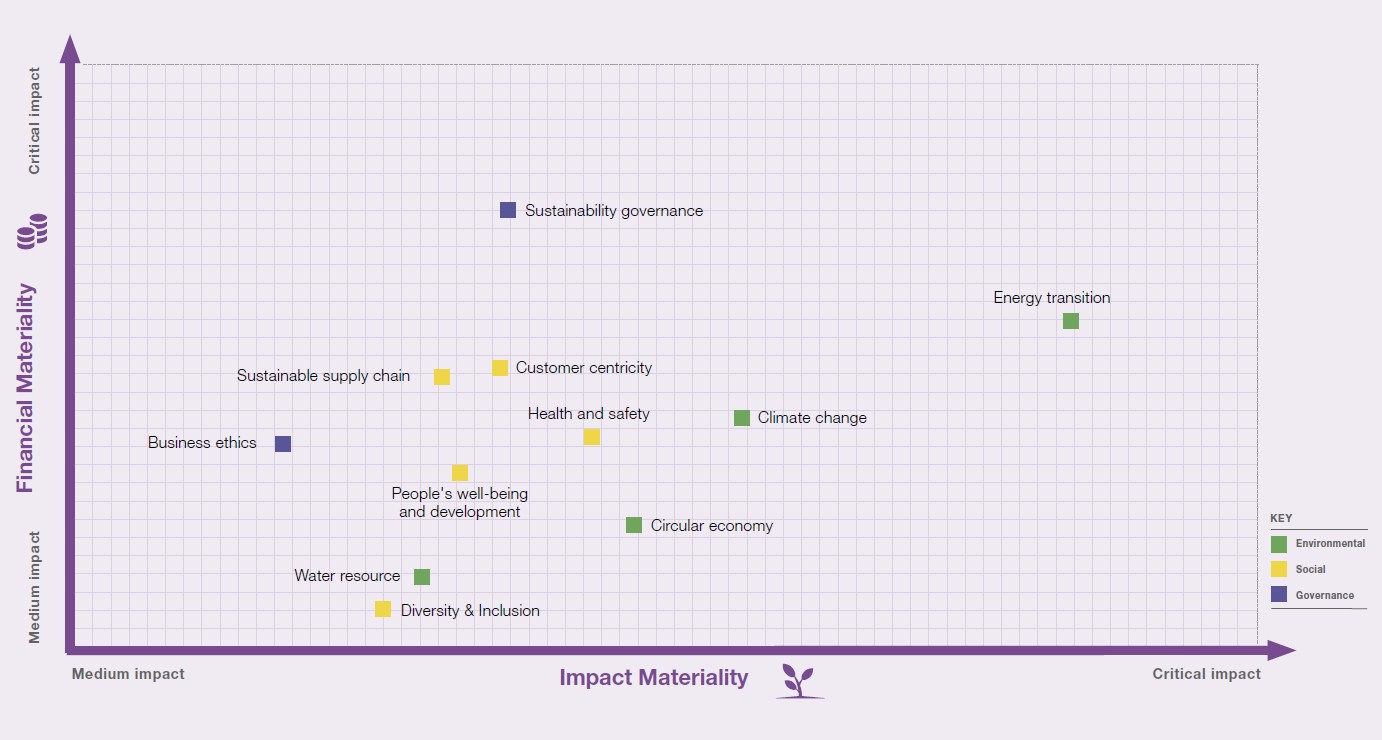
The materiality matrix

Our sustainable development priorities
We want to integrate sustainability into every aspect of our business, contributing positively to society and the environment.
CSRD: a new standard for transparency
The EU Directive 2022/2464 (Corporate Sustainability Reporting Directive, CSRD), approved by the European Parliament in November 2022 and effective from January 2023, introduces new rules for sustainability reporting. This directive aims to improve the clarity and transparency of sustainability information, requiring that the Sustainability Report is prepared according to the European Sustainability Reporting Standards (ESRS) issued by the European Financial Reporting Advisory Board (EFRAG).
Double materiality analysis
Among the main changes, CSRD introduces the concept of double materiality, divided into two dimensions:
- Impact materiality (inside-out): assessment of the Group’s impacts on the environment, society, and governance;
- Financial materiality (outside-in): assessment of sustainability aspects that can influence business development and performance, and thus financial value.
In anticipating the CSRD requirements, we conducted a double materiality exercise, identifying the impacts, risks and opportunities that can significantly influence future business performance in the short, medium, and long term. Relevant impacts were evaluated and prioritized with the participation of internal and external stakeholders, following the guidelines of GRI 2021 standards and EFRAG metrics.
- Impacts, risks and opportunities identification: identification of major impacts, risks and opportunities (IROs) potentially material to Pietro Fiorentini;
- Impact materiality: identification of significant impacts and material issues according to the inside-out perspective;
- Financial materiality: identification of significant risks/opportunities and material issues according to the outside-in perspective;
- Double materiality matrix: aggregation of results and construction of the double materiality matrix.
Our materiality matrix
The results of Impact and Financial Materiality analyses were used for the development of the double materiality matrix and the definition of material themes. The aggregation of the results enabled the matrix representation of the Group’s materiality, confirming the consistency of the priority themes with the objectives, on which the sustainability strategy was defined.


